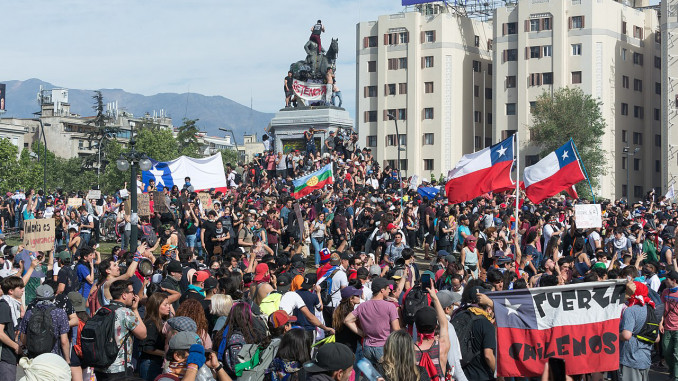
The following article is translated from French from the website Convergences Revolutionnaires, organ of our comrades of the fraction “Etincelle” in the New Anticapitalist Party in France.
September 6, 2022
It will probably take more time before we have a precise view of the meaning of the results, and of the feedback from the revolutionary militant groups. The results are unquestionable – 62 percent voted the constitution down with even higher scores in the provinces in the south and north. This seems to go in the opposite direction of the social dynamic that was initiated in October 2019. A good part of the left is accusing the population of fickleness and invoking lies and fear to explain these results, and also – let’s just say it clearly – to mask the failure of Gabriel Boric’s government. What is the reality?
What are the differences between the elections of 2020 and 2022?
A few facts. First, the previous elections in 2020 were decided in Santiago, the capital, where almost half of Chileans live. This time the provinces set the tone by tilting strongly towards rejection. Secondly, what are the differences between the way the 2020 vote initiated the constituent process, and the process in 2022? The former – which was not compulsory – saw a low turnout of 51 percent of voters, or 7.5 million voters. The September 4 vote, which was mandatory, had 15 million voters (+85.7 percent). In 2020, 78 percent voted for a new constitution, with 5.8 million votes; in 2022, the 38 percent approved the constitution with 4.8 million votes, or one million fewer between the two votes. The “no” side gained 6.2 million votes in two years [1]. This suggests that those who did not vote in 2020, taking a neutral position or not wishing to block it, decided to participate this time to express a conservative turn. A more precise analysis of the results by neighborhood may be able to give us a view of the dynamics in the working class. But it bears repeating: elections, especially when they are beyond the control of workers, are only rarely a favorable terrain for advancing their rights and freedoms.
On the left
Whatever the analyses of the various revolutionary organizations (Trotskyist or libertarian) as to the voting instructions, all of these rightly point out the sad balance sheet of the brief tenure of the so-called radical left in office: austerity, repression, broken promises. All of which has the impact of demobilizing the working class. This is a very accurate observation, provided that we add something essential: it is the very process of the constituent assembly’s developing the constitution, which is out of the control of the workers and the people, that has diverted the social energy of the Chilean October towards an institutional dead end. The divergence has a history. The activists are saying it: on the left, on one side are the “Octobrists” (supporters of the extra-parliamentary movement) and on the other the “Novembrists” (those, including Gabriel Boric, who in November 2019 refused to bring down the government out of a “sense of responsibility”). On the very evening of the vote, on September 5, the search for an “all-party alliance” to “relaunch the constituent process,” in a solemn declaration by the Presidency, indicates that Gabriel Boric’s coalition (which includes the Communist Party) wants to persevere with institutional reform at all costs without any mobilization of workers and the population. The right wing is savoring its victory and reserving its response in order to be in a good position to bargain. The “realist” left believes that the constitutional project was too radical, and is thus preparing the kind of deals that it specializes in, in order to extinguish the slightest radicalism in a new draft of the Constitution, even if it is only a facade.
There were clashes when the results were announced in Santiago, involving thousands of young people – many of them left-wing critics of the constituent process – and the police of the left-wing government. They are convinced, and rightly so, that real change will really be made outside the parliaments. But the facts are stubborn: in October 2019, almost half of Chileans were in the streets, nearly ten million, far more than today’s “no” supporters. The “Octobrists” were more numerous than the “Septembrists” of today. They will be even more numerous tomorrow: the path of struggle outside the institutions is the only one that guarantees a Chilean spring that goes all the way this time.
[1] Figures analyzed by Carolina Cerda Guzman, Professor of Public Law at the University of Bordeaux, on her personal networks.




